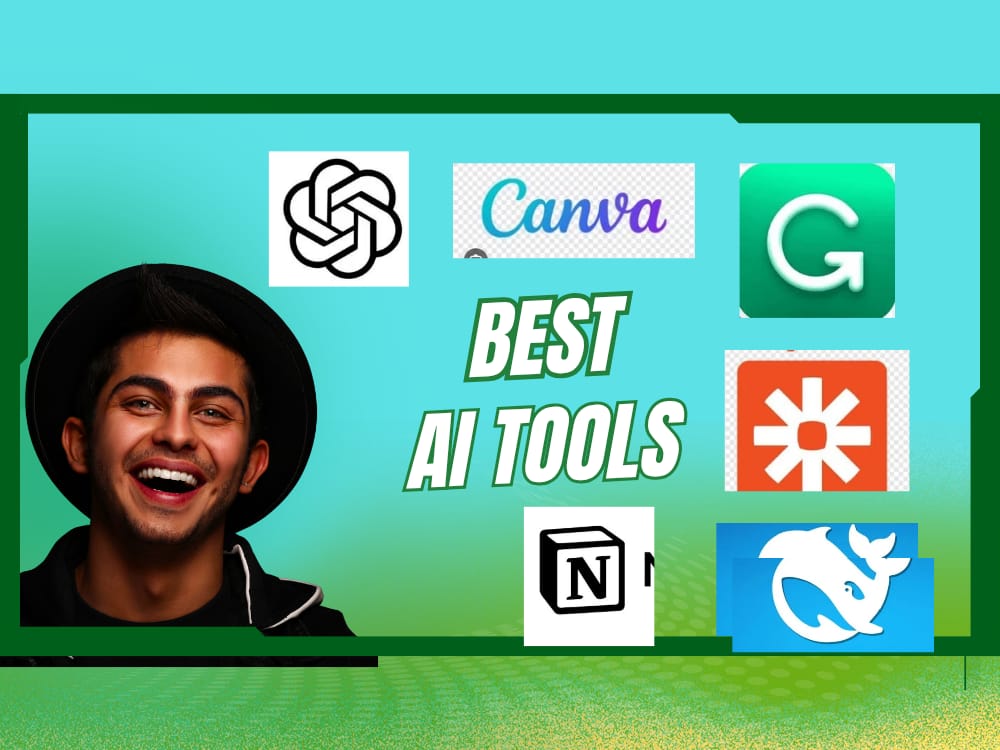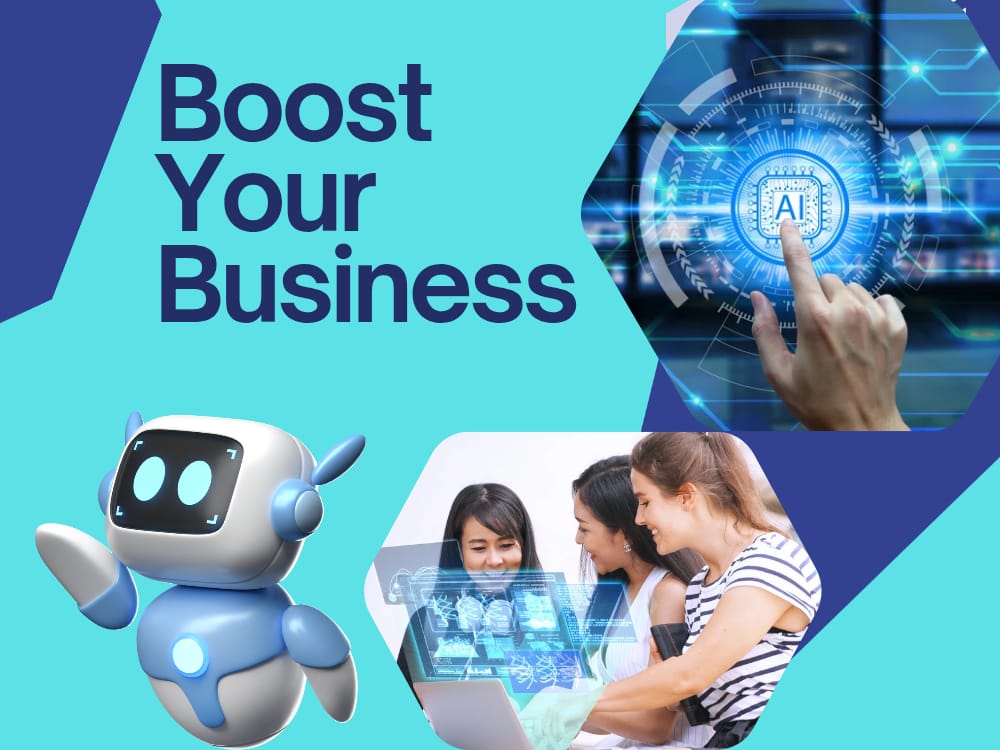Top Artificial Intelligence Tools of 2025

The phenomenal growth of artificial intelligence (AI) is revolutionising industries, workflows, and daily tasks. With the dawn of 2025, demand for the top artificial intelligence tools of 2025 is running high. Professionals and companies are competing to integrate the top artificial intelligence tools of 2025 to automate procedures, make informed decisions, and stay ahead in the competition.
Whether you’re a company looking to scale business or an individual looking to enhance productivity, having knowledge of the top artificial intelligence tools for 2025 is essential. In this article, we analyse the best AI tools in four large categories—AI-powered business automation, AI-driven decision-making, top software AI for companies, and must-have tools for professionals—to help you prepare for the future.
Artificial Intelligence Powered Business Automation Tools
It’s a game-changer to make routine work automatic. Here are three tools leading the biggest charge in 2025:
1. UiPath
UiPath combines RPA with AI to robotise complex processes. Its AI technologies can read documents, extract data, and even make simple choices, reducing manual work by up to 70%. For example, it can automate bills or reply to customer queries without human intervention.
2. Automation Anywhere
This software applies cognitive automation to combine RPA with NLP and machine learning. It’s best suited for activities such as data entry, compliance verification, and customer onboarding. Its “Bot Store” provides pre-built automation capabilities, making it easy for non-technical individuals to use.
3. Zapier
Zapier connects more than 5,000 apps (including Gmail, Slack, and Salesforce) to automate workflows. Its AI-powered “Zaps” learn from use to offer time-saved automation recommendations, such as auto-reacting to email or sinking data on platforms.
Artificial Intelligence powered decision making equipment
Strategic planning relies on knowledge based on facts. These tools bring raw data into actionable intelligence:
1. IBM Watson
Watson reads through unstructured data (tweets, reports, etc.) to establish trends and future trends. Shoppers use it to estimate demand, for instance, and healthcare providers use it to give personalised advice for treatments.
2. Tableau + Einstein AI
Tableau’s integration with Salesforce’s Einstein AI brings predictive analytics into its data visualisation platform. It features predictive analytics that automatically highlights top trends like sales opportunities or supply chain risks, allowing the team to respond more quickly.
3. H2O.ai
This open-source platform allows companies to create machine learning models without coding. Its AutoML feature automatically trains models, making it easy to predict customer churn, fraud, or equipment failure.
3. Top Artificial Intelligence Software for Companies
These tools optimise operations across departments:
1. Salesforce Einstein
Embedded in Salesforce’s CRM, Einstein AI automates lead scoring, predicts patron wishes, and personalises advertising campaigns. For instance, it is able to alert income groups about excessive-priority leads or recommend upsell opportunities.
2. Microsoft Dynamics 365 AI
This suite integrates AI into finance, sales, and delivery chain control. Its “Customer Insights” module unifies records from more than one asset to create designated patron profiles, improving retention techniques.
3. Oracle Cloud AI
Oracle’s AI-powered cloud apps streamline HR, finance, and procurement. Its recruitment tool scans resumes for pinnacle applicants at the same time as its financial assistant detects anomalies in real-time transactions.
4. ChatGPT
ChatGPT is AI-powered customer support & content generation that provides instant customer support, assists with content creation, and enhances communication in businesses.
5. DeepSeek
And the latest software is DeepSeek specialises in crafting tailored software solutions for businesses, from concept to deployment. It analyses your goals, recommends tech stacks (React, Python, AWS), and designs secure, scalable systems and builds web/mobile apps, CRMs, ERPs, or AI tools, ensuring seamless API integrations and compliance (GDPR/CCPA). While it can’t manage servers, I provide code, prototypes, and architecture guidance, collaborate with your team on troubleshooting/optimisation, and assist with CI/CD pipelines. Its focus is on solving pain points like inefficiency or poor engagement through agile workflows, documentation, and post-launch support.
Individuals can harness AI to work smarter:
1. GrammarlyGO
Beyond grammar exams, GrammarlyGO uses generative AI to rewrite sentences, adjust tone, and even draft emails. It’s like having a writing instructor for every record.
2. Canva Magic Design
Canva’s AI generates layout templates based totally on a textual content activation (e.g., “create a LinkedIn post about sustainability”). It additionally resizes designs for extraordinary systems, saving hours for non-designers.
3. Otter.ai
This device transcribes meetings in real-time, summarises key factors, and highlights movement gadgets. It integrates with Zoom and Teams, making it necessary for far-off workers.
4. Notion AI
- Best for: AI-Powered Note-Taking & Organization
- Features:
- Helps in writing and organizing notes
- Uses AI to summarize key points
- Boosts workplace productivity
5. Jasper AI
- Best for: AI Content Creation
- Features:
- Assists in writing blog posts, social media content, and emails
- Uses AI to generate engaging content
- Saves time for professionals in marketing and content creation
These AI-powered tools help professionals work smarter and more efficiently.
FAQ: Top Artificial Intelligence Solutions for 2025
Q1: Why is AI equipment so crucial to teams in 2025?
AI equipment automates processes, reduces human errors, and delivers document-based insights, enabling corporations to make faster and smarter decisions in competitive markets.
Q2: How do AI decision-making solutions operate?
They examine past and real-time information to choose patterns, predict outcomes, and recommend actions. For instance, they might recommend best-fit inventory amounts or marketing strategies.
Q3: What must organisations keep in mind when choosing AI equipment?
Prioritise ease of integration with existing infrastructure, scalability, user-friendliness, and vendor support above all else. Also, ensure the tool complies with privacy legislation.
Q4: Are AI equipment difficult to deploy?
Mostst new pieces of equipment are designed for non-technical customers. Vendors tend to offer tutorials, templates, and customer support to simplify the process of getting started.
Q5: What are the dangers of relying on AI equipment?
Potential dangers include breaches of information safety, algorithmic bias, and overdependence on computerisation. Periodically review AI systems and preserve human oversight.
Conclusion
As we make our way into 2025, AI will continue to reshape sectors and enhance the manner in which businesses and professionals conduct business. The top artificial intelligence tools for 2025 offer powerful remedies for automation, decision-making, and productivity enhancement.
Whether you want to automate business strategies, enhance customer interaction, or make content creation more elegant, there is an AI solution to turn your dreams into reality. With these AI solutions, organisations and professionals can stay ahead in a more competitive world.
If you are not yet utilising AI gear, however, the time may be now to discover and incorporate them into your workflow. The future is automated, and those who







Was browsing around and stumbled upon sunwinlink. Seems like they have a good handle on things. Smooth site, easy to get around, and games are running great. Thumbs up from me! sunwinlink